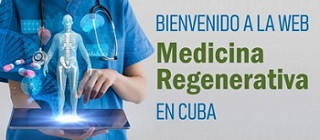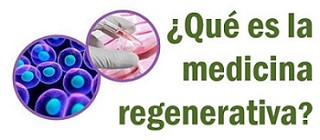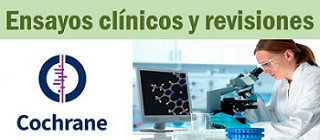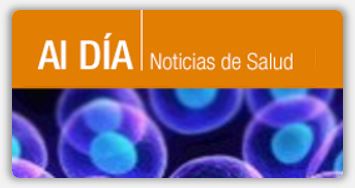Regulaciones sobre el uso de células madre.
2-11-2010
Las terapias con células madre ofrecen un enorme potencial para el tratamiento de una amplia gama de enfermedades y lesiones, incluidas las enfermedades neurodegenerativas, enfermedades cardiovasculares, diabetes, artritis, lesiones de la médula espinal, derrames cerebrales y quemaduras. Sin embargo, la capacidad de regeneración y la diferenciación y otros aspectos de las células madre que los hacen atractivos para los tratamientos también crean problemas para el establecimiento de criterios para garantizar el desarrollo de terapias seguras y eficaces. Aunque los marcos regulatorios emergentes tratan de definir estos criterios, la falta de legislación o la ejecución, existen brechas en la supervisión reguladora.
Uno de los temas de mayor debate en la actualidad es la aplicación clínica de las células madre.
Por ello, recientemente se llevo a cabo un simposio en San Franciso California, coauspiciado por la Sociedad Internacional de Investigacion con Celulas Madre (conocidad por sus siglas en inglés con ISSCR), el Instituto de Medicina Regenerativa de California y la Sociedad Intenacional de Terapia Celular.
Este simposio estableció algunas normas y regulaciones, que a continuación detallamos y además se creó un sitio WEB de la ISSSCR.
En esta sección de nuestra página nos proponemos mantener actualizados los aspectos relacionados con tan importante aspecto del desarrollo del trabajo con las células madre.
Articulo completo en Cell Stem Cell, Volume 7, Issue 4, 451-454, 8 October 2010
a través del HINARI
On the Streets of San Francisco: Highlights from the ISSCR Annual Meeting 2010
Andrew G. Elefanty1, , , Robert Blelloch2, Emmanuelle Passegué3, Marius Wernig4 and Christine L. Mummery5
- The 2010 Annual Meeting of the International Society for Stem Cell Research (ISSCR) was held in San Francisco in June with an exciting program covering a wealth of stem cell research from basic science to clinical research.
ISSCR: Committee Forum
Stem Cell Theraoies in Clinical Trials: Workshop on Best Practices and Nedd for Harmonization. Martel K. Trouson A. Baum E.
Practices and the Need for Harmonization
1 Biotechnology Consultant, San Francisco, CA 94107, USA
2 California Institute of Regenerative Medicine, San Francisco, CA 94107, USA
Summary
A workshop addressing regulation of clinical implementation of stem cell therapies preceded the ISSCR 8th Annual Meeting, cosponsored by the International Society for Stem Cell Research, the California Institute for Regenerative Medicine and the International Society for Cellular Therapy.
Introduction
Stem cell therapies offer enormous potential for the treatment of a wide range of diseases and injuries including neurodegenerative diseases, cardiovascular disease, diabetes, arthritis, spinal cord injury, stroke, and burns. However, the regenerative and differentiation capacity and other aspects of stem cells that make them attractive as treatments also create challenges for the establishment of criteria to ensure development of safe and effective therapies. Although emerging regulatory frameworks seek to define these criteria, the absence of legislation or enforcement, desperation for cures and media hype spur a medical tourism industry that exploits differences or gaps in regulatory oversight.
Stem cell-based products present a unique regulatory challenge because standard pharmaceutical paradigms do not wholly apply and accordingly, stem cell therapies do not neatly fit into current regulatory categories. As a result, regulatory requirements are often unclear in their application and create uncertainty.
To better understand how stem cell therapies are faring in this regulatory environment, the California Institute of Regenerative Medicine (CIRM) performed a qualitative survey of their stakeholders and presented it at this workshop. The salient conclusion of the survey is that the relevant regulatory agency, the Food and Drug Administration, USA (FDA), readily permits clinical trials on transient cell therapies, but it is very difficult to get pluripotent or nontransient (integrating) cell therapeutics into trials. Barriers to the advancement of these therapies lie in both technical and regulatory constraints.
Technical constraints include the need for extended vigilance of integrating cells, as well as novel assays and predictive animal models. In particular, given that regenerative stem cell therapies are intended to persist lifelong in the host as part of the therapeutic solution they provide, it will be critical to minimize the presence of any residual undifferentiated cells. Thus, purity threshold levels need to be established at the onset of therapy and long-term patient monitoring will be required. However, it is debatable whether the limit of detection available today is sensitive enough for sufficiently rigorous tracking of cells in vivo. Accordingly, there is a need for the development of high resolution imaging, markers and extended monitoring in different species to identify which ones are the most predictive.
Another key finding of the CIRM survey is that regulatory uncertainty creates delays in the clinical development of pluripotent and nontransient cell therapies. As the level of uncertainty rises, development costs escalate and investment dollars attenuate. Frustrated companies surveyed by CIRM voiced key operational adjustments that could enhance regulatory predictability: early notification of newly formulated positions or guidance espoused by the FDA, more frequent and consultative communication with the agency, and ability to obtain as many binding decisions as possible for aspects of preclinical and clinical programs. Some companies felt that the risk-benefit evaluation should consider the cost to patients of delaying development of new therapies that could treat them.
There is a clear need for new research tools and regulatory guidance to foster development of the types of stem cells that are potentially the most therapeutically impactful.
International Oversight
The momentum of stem cell therapy advancement is outpacing the speed of legislation and regulation. Nonetheless, governments, academia and the private sector are building frameworks to lay the foundation for regulation (Table 1). These evolving frameworks reflect unique cultural differences that give rise to a spectrum of varying risk tolerances in stem cell research, development and commercialization. Eminent scientists and regulatory experts from around the globe outlined their positions, pointing to some unique features of their regions.
Table 1 Regulatory Frameworks by Region
Country Regulatory Framework Related Websites
Argentina Ministry of Health and Administration of Medications, Foods, and Medical Technology (ANMAT) created Instituto Nacional Central Unico Coordinador de Ablacion e Implante (INCUCAI) in 2007 as an agency relating to the use of human cells for implantation. In 2008, the Consorcio de Investigación en Celulas Madres (CICEMA) was created to foster ties between industry, academia and the clinic. http://www.msal.gov.ar/
http://www.anmat.gov.ar/
http://www.incucai.gov.ar/
www.cicema.org.ar/english/home_eng
China The Ministry of Health of the People’s Republic of China (MOH) provides guidance on regulation of stem cell therapies. http://www.moh.gov.cn/; http://eng.sfda.gov.cn/eng/
European Union The Advanced Therapy Medicinal Products (ATMP) Regulation was adopted by the European Medicines Agency (EMA) in 2007. Stem cell therapies are currently an area of discussion within the Committee for Advanced Therapies (CAT) created under the ATMP. http://ec.europa.eu/health/human-use/advanced-therapies
http://www.ema.europa.eu/
India The Indian Council for Medical Research (ICMR) created the National Apex Committee for Stem Cell Research and Therapy (NAC-SCRT), which is an interagency body tasked with the oversight of the research and development of stem cell therapeutics. http://www.icmr.nic.in/
Japan The Japanese Ministry of Health, Labor and Welfare (MHLW) drafted guidelines for development and approval of novel medical products including adult stem cells. Pluripotent cells are not yet addressed in the current version of the guidelines. www.mhlw.go.jp/english
United States of America The Center for Biologics Evaluation and Research (CBER), Office of Cellular, Tissue and Gene Therapies (OCTGT) is charged with the oversight of stem cell products. In 2005, CBER-OCTGT issued guidance on cellular therapies in the Tissue Rules (CFR 1271) and in 2008 provided a briefing pertaining to hESC-related therapies. www.fda.gov/BiologicsBloodVaccines/CellularGeneTherapyProducts
Argentina
Stem cell therapies are not yet approved in Argentina; however, to begin to build the infrastructure for their regulation, the Ministry of Health and Administration of Medications, Foods, and Medical Technology (ANMAT) created two units directed toward cellular treatments. The first, Instituto Nacional Central Unico Coordinador de Ablacion e Implante (INCUCAI), was created by a resolution of the Ministry of Health in 2007 as an agency relating to the use of human cells for implantation. The second, Consorcio de Investigación en Celulas Madres (CICEMA), is a consortium created in 2008 with the objective of studying the therapeutic potential of stem cells, fostering ties between industry, academia, and the clinic and setting up processes to develop these discoveries in a rigorous way.
China
The State Food and Drug Administration (sFDA) regulated cellular therapies in China until 2009, when the sFDA became part of the Ministry of Health (MoH). Accordingly, in the process of absorbing the sFDA and establishing uniform policies to regulate cell transplants, the MoH is requiring certification of organ transplant and cellular therapy centers and procedures by the end of 2010. Although cell therapies are now centrally regulated by MoH, there are special administrative regions (SAR) that regulate their own medical care. These include Hong Kong, Shenzhen, and Tibet. In particular, the Hong Kong SAR has its own Department of Health that approves clinical trials.
China currently permits autologous transplant of bone marrow, off-label use of cord blood and fetal cell transplants. As such, approved stem cell clinical trials are currently ongoing in China. This includes a 400 patient phase 3 clinical trial in which cord blood mononuclear cells are transplanted into patients with chronic spinal cord injuries. The trial is randomized to oral lithium or placebo and patients are followed for 1 year. Prior preclinical animal studies were not conducted.
The European Union
The European Medicines Agency (EMA) regulatory framework for stem cell-based therapies is complex and dynamic. In 2007, the EMA adopted the Advanced Therapy Medicinal Products (ATMP) Regulation. The ATMP comprises new medical products based on genes (gene therapy), cells (cell therapy), and tissues (tissue engineering) and allows for the creation of novel committees and processes aimed at the development of these new medical products.
In 2008, the ATMP established a multidisciplinary Committee for Advanced Therapies (CAT) to assess products and track related scientific developments. CAT consists of 22 experts from national competent authorities; five members from the Committee for Medicinal Products for Human Use (CHMP); two patients; and two clinicians and alternates for all aforementioned positions. CAT is currently considering various aspects of stem cell-based medicinal products and monthly meeting reports are available on their website. The ATMP allows for a centralized marketing authorization procedure with the aim of leveraging the collective EU expertise while permitting country to country differences with respect to the requirements for entering into the clinic. Member states have the right to refuse to market a product nationally on ethical grounds, so an approved product might not be marketed in all EU/European Economic Area (EEA) countries.
With respect to marketing of stem cell therapies, there are commercially available products in the EU currently marketed under old frameworks. These therapies are effectively grandfathered under a transitional period that extends until 2011. Member states have authority to allow or refuse marketing of these therapies. It is important to note that the EMA does not support the marketing of unlicensed stem cell therapies.
One especially unique feature of the ATMP that bears mentioning is the recognition that a disproportionate share of new medical products will be generated by smaller companies and hospitals rather than by large pharmaceutical firms. To this end, the ATMP provides incentives for small and medium-sized enterprises, including scientific advice, special certification procedures, and fee reductions.
India
Robust interest in stem cell treatments in India results from a unique combination of three main drivers: (1) significant unmet health needs; (2) high consumer demand from a large private healthcare network; and (3) historical trust in alternative systems of medicine, which may not be evidence based. This high level of interest in stem cell treatments also engenders ample funding for research and development of stem cell therapies through venture capitalists and through the Department of Biotechnology, which supports 90% of the projects.
The building blocks for regulatory approval of stem cell therapies are still in development. The Indian Council for Medical Research (ICMR) formulated guidelines for stem cell research in 2007. In particular, the ICMR has forbidden the use of embryonic cells for clinical treatment in its guidelines. However, these guidelines have not yet been converted into law and thus it is expected, but not mandatory, to register all stem cell clinical trials.
While the regulatory system is still in development, there are currently different mechanisms to regulate clinical translation, variable criteria used by oversight bodies for protection for human subjects and the ability to regulate practice of medicine separate from research. To unify and streamline the process, the National Apex Committee for Stem Cell Research and Therapy (NAC-SCRT) was created in 2009. NAC-SCRT is an interagency body created with the aim of effectively reviewing and monitoring stem cell research in India.
Japan
The Ministry of Health, Labor and Welfare (MHLW) has produced a Guideline on Ensuring Quality and Safety of Products Derived from Processed Human Cell and Tissues (MHLW Notification #1314; Nov 26, 2000) as the basis for both the regulation of stem cell clinical research as well as the promotion of regenerative medicine. In this guideline, the definition of stem cells comprises tissue-derived human stem cells that are multipotent and self-renewing. It is noteworthy that embryonic stem cells (ESCs) and induced pluripotent stem cells (iPSCs) are excluded from these guidelines. The MHLW is currently in the process of amending the guidelines to include ESCs and iPSCs. Meanwhile, transplantation of ESCs is expressly prohibited. Also, the MHLW has formed a committee that is working to amend the guidelines to consider collaboration, manufacturing process, proof of concept, safety assessment, and clinical safety management of stem cell therapies.
United States
The FDA’s Center for Biologics Evaluation and Research (CBER), Office of Cellular, Tissue and Gene Therapies (OCTGT) is charged with the oversight of stem cell products as well as other biological products including gene therapies, tumor vaccines and immunotherapies. In 2005, CBER-OCTGT issued the Tissue Rules (21 CFR 1271), which form the basis for regulation of all human cells, tissues, and cellular and tissue-based products (HCT/Ps). Regarding stem cells specifically, in 2008 CBER-OCTGT generated guidance for ESC-based therapies as well as considerations for preclinical safety testing and patient monitoring.
Stem Cell Tourism
The absence of international harmonization of regulations and robust enforcement has allowed stem cell tourism to take root. The practice of traveling abroad for medical treatment does not in itself present concern if patients are availing themselves of treatments that are part of regulated trials or, where marketed, have been established through clinical trials to be safe and effective. However, this is not always the case.
Stem cell clinics frequently advertise procedures on the internet and promise to deliver therapeutic outcomes that are simply not backed by scientific literature (Lau et al., 2008). In some cases, large sums of money are charged and can range from $20,000$30,000 or more.
In response to aggressive marketing campaigns, the ISSCR launched a new website (http://www.closerlookatstemcells.org/) based on recommendations from the ISSCR’s Task Force on Unproven Stem Cell Treatments (Taylor et al., 2010). The goal of the website is to provide patients with information about stem cells pertaining to stem cell treatments and to outline widely accepted best practices in introducing new medicines into the clinic.
Beginnings of Harmonization
Although the stem cell industry may not be mature enough to support the types of harmonization activities that we have seen in the biotechnology field, regulators are making efforts to understand one another’s approaches across borders. One particular example of cooperation is the existing FDA-EMA Cluster, which expanded its scope in 2008 to include cell and gene therapies after the creation of the ATMP regulation. A second example is the role of the UK-based Economic and Social Research Council (ESRC) in fostering the development of stem cell regulations in Argentina.
Global harmonization efforts will ultimately need to accommodate nuances of cultural dissimilarities and risk appetites to strike an acceptable balance between progress and safeguards. There are several bodies that can play complementary roles in this international effort, including the National Institute of Standards and Technology (NIST), the Council for International Organizations of Medical Sciences (CIOMS), and the International Conference on Harmonisation (ICH), as well as the sponsors of the regulatory workshop, ISSCR, CIRM, and the International Society for Cell Therapy.
Conclusions
The tenor of the regulatory workshop revealed a collective commitment to an ambitious and complex therapeutic goal. Key takeaways included (1) awareness of the need for legislation and more rigorous enforcement in some countries; (2) the importance of independent review and transparencyin particular, the imperative to publish through a process of peer-review and to report negative data; (3) desire to harmonize oversight mechanisms for consistency, simplicity and efficiency; (4) the need to manage conflicts of interest; and (5) recognition of the medical needs of patients and the responsibility to move forward together as rapidly and as safely as possible.
References
Lau et al., 2008 Lau, D., Ogbogu, U., Taylor, B., Stafinski, T., Menon, D., and Caulfield, T. (2008). Cell Stem Cell 3, 591594. PubMed
Taylor et al., 2010 Taylor, P.L., Barker, R.A., Blume, K.G., Cattaneo, E., Colman, A., Deng, H., Edgar, H., Fox, I.J., Gerstle, C., Goldstein, L.S., et al. (2010). Cell Stem Cell 7, 4349.




Haga un comentario